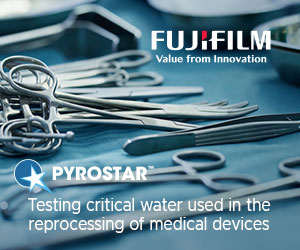Resource Challenged Hospitals Can Cash in on the Government's Dollars
| It seems like a Catch-22. If a hospital meets the quality and cost goals defined by the Patient Protection and Affordable Care Act they will be eligible for a piece of the $850 million of Medicare funds being set aside. But how can hospitals that are already dealing with lagging resources make that happen? One way is to develop new healthcare associated infection strategies that include screening and testing for Methicillin-Resistant Staphylococcus aureus (MRSA), Clostridium difficile infections (CDI), and Vancomycin-Resistant Enterococcus (VRE).There is no question that a hospital´s ability to control these healthcare associated infections will provide higher quality care, reduce costs, and contribute to patient satisfaction. These are all goals that contributed to the launch of the Hospital Value-Based Purchasing Program in the first place. Of course, increased screenings and testing are not free. But, they can be budget-friendly if hospitals are prudent in their decisions on when to best use chromogenic media versus molecular-based tools. Each has its place.The truth is, the more expensive molecular methods get results faster, but the high price for speed isn´t always necessary. Identifying when to use each can go a long way in stretching hospital resources while improving the quality of care. One tool that can help with method selection is the MRSA Screening Cost Analyzer developed by Dr. Christopher Hollenbeak, a health economist at Penn State College of Medicine. The MRSA Screening Cost Analyzer evaluates the economical implications of MRSA screening in hospital settings and can help hospitals understand how to reduce unnecessary isolation costs in their hospital. This model estimates the cost and outcome implications of the various methods of screening MRSA, taking into account whether or not hospitals are prepared to act immediately upon screening results. Proper monitoring will reward hospitals as their efforts favorably impact quality care, reduce costs, and contribute to patient satisfaction. Gaining access to a portion of the $850 million of Medicare funds can be a boon to resource challenged hospitals. But that is only half of the Hospital Value-Based Purchasing Program story. The other half of the story is where this incentive money comes from. The government will be taking 1% of the Medicare dollars right off the top and awarding that $850 million to hospitals that conform to the goals of the Value-Based Pricing initiative. That 1% is money that otherwise would be split proportionately between all hospitals. So in the end, if a hospital is not achieving the government goals, not only are they eliminated as part of the new dollar pool, but they are also losing the money that went to establish that fund. It´s impossible to overlook the fact that Medicare is the largest single payer for hospital services. Or to forget that in 2009, more than 7 million Medicare beneficiaries experienced more than 12.4 million hospitalizations. Yet HealthCare.gov says one in seven Medicare patients will experience some 'adverse' event such as preventable illness or injury while in the hospital.So, preventing the health risks of healthcare associated infections is not just good for patients, it is better for the bottom line of resource challenged hospitals. |
NOTE: This item is from our 'historic' database and may contain information which is not up to date.
Source : Remel Inc. View Company Information
Posted on August 12, 2011






